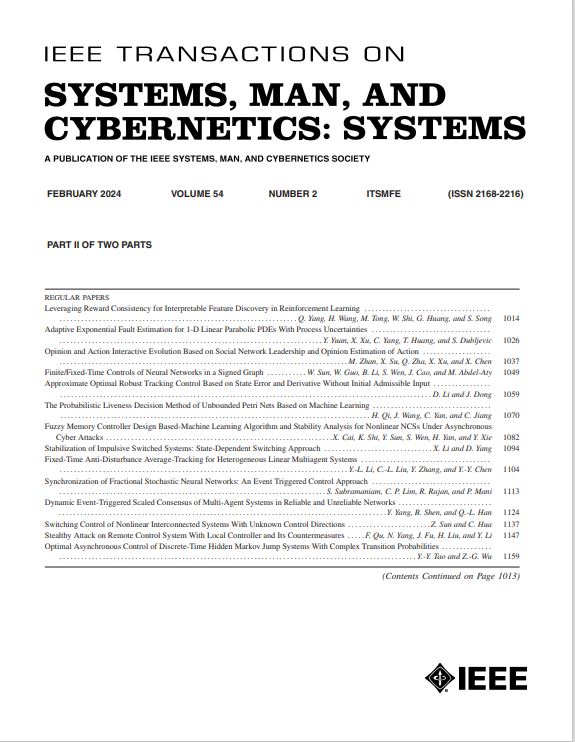Cross-Domain Random Pretraining With Prototypes for Reinforcement Learning
IF 8.6
1区 计算机科学
Q1 AUTOMATION & CONTROL SYSTEMS
IEEE Transactions on Systems Man Cybernetics-Systems
Pub Date : 2025-02-28
DOI:10.1109/TSMC.2025.3541926
引用次数: 0
Abstract
Unsupervised cross-domain reinforcement learning (RL) pretraining shows great potential for challenging continuous visual control but poses a big challenge. In this article, we propose cross-domain random pretraining with prototypes (CRPTpro), a novel, efficient, and effective self-supervised cross-domain RL pretraining framework. CRPTpro decouples data sampling from encoder pretraining, proposing decoupled random collection to easily and quickly generate a qualified cross-domain pretraining dataset. Moreover, a novel prototypical self-supervised algorithm is proposed to pretrain an effective visual encoder that is generic across different domains. Without finetuning, the cross-domain encoder can be implemented for challenging downstream tasks defined in different domains, either seen or unseen. Compared with recent advanced methods, CRPTpro achieves better performance on downstream policy learning without extra training on exploration agents for data collection, greatly reducing the burden of pretraining. We conduct extensive experiments across multiple challenging continuous visual-control domains, including balance control, robot locomotion, and manipulation. CRPTpro significantly outperforms the next best Proto-RL(C) on 11/12 cross-domain downstream tasks with only 54.5% wall-clock pretraining time, exhibiting state-of-the-art pretraining performance with greatly improved pretraining efficiency.求助全文
约1分钟内获得全文
求助全文
来源期刊

IEEE Transactions on Systems Man Cybernetics-Systems
AUTOMATION & CONTROL SYSTEMS-COMPUTER SCIENCE, CYBERNETICS
CiteScore
18.50
自引率
11.50%
发文量
812
审稿时长
6 months
期刊介绍:
The IEEE Transactions on Systems, Man, and Cybernetics: Systems encompasses the fields of systems engineering, covering issue formulation, analysis, and modeling throughout the systems engineering lifecycle phases. It addresses decision-making, issue interpretation, systems management, processes, and various methods such as optimization, modeling, and simulation in the development and deployment of large systems.
 求助内容:
求助内容: 应助结果提醒方式:
应助结果提醒方式:


